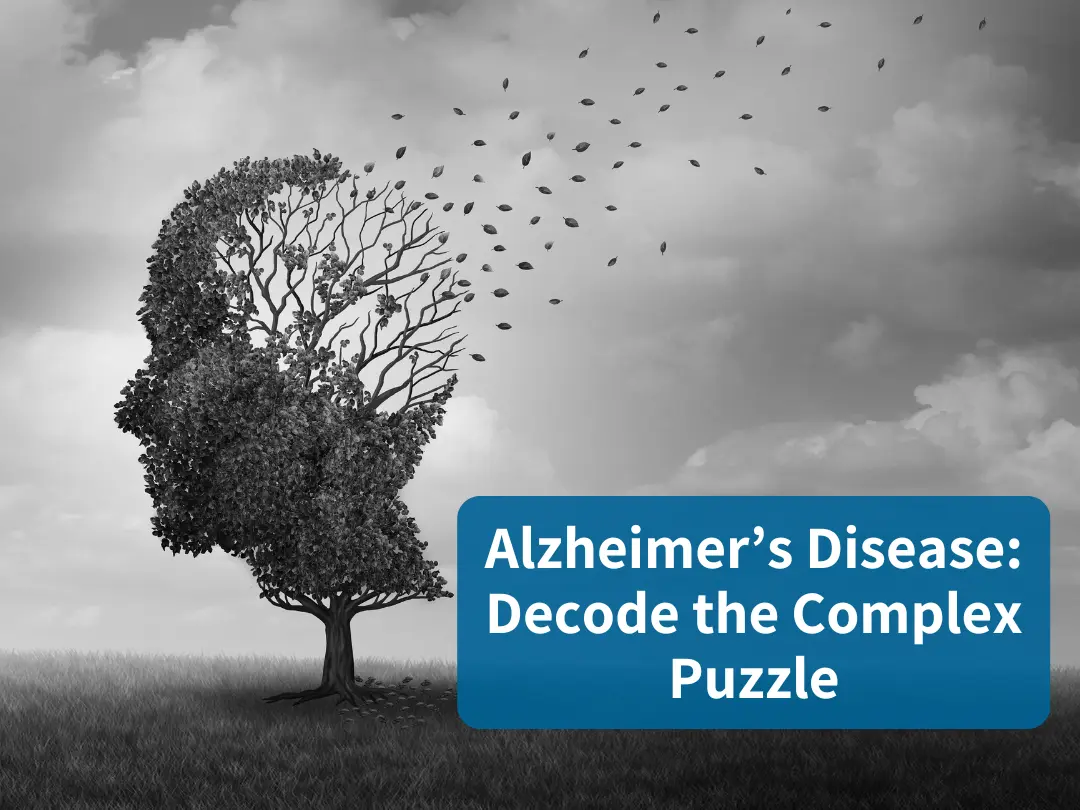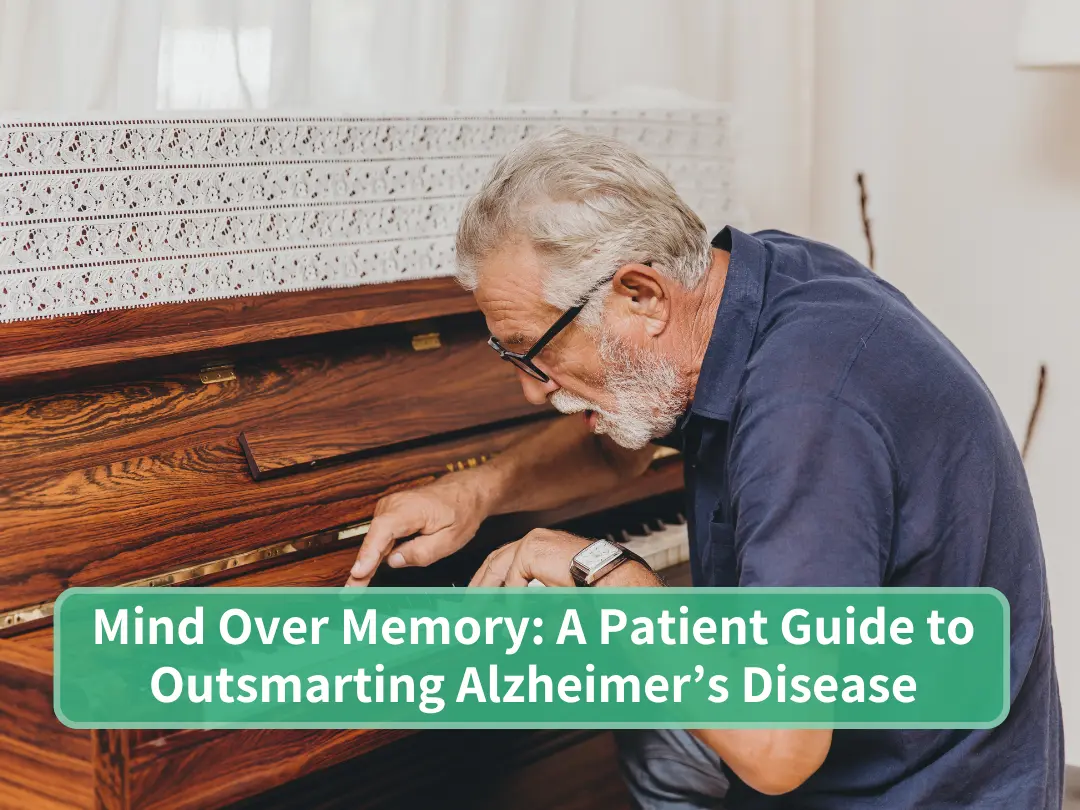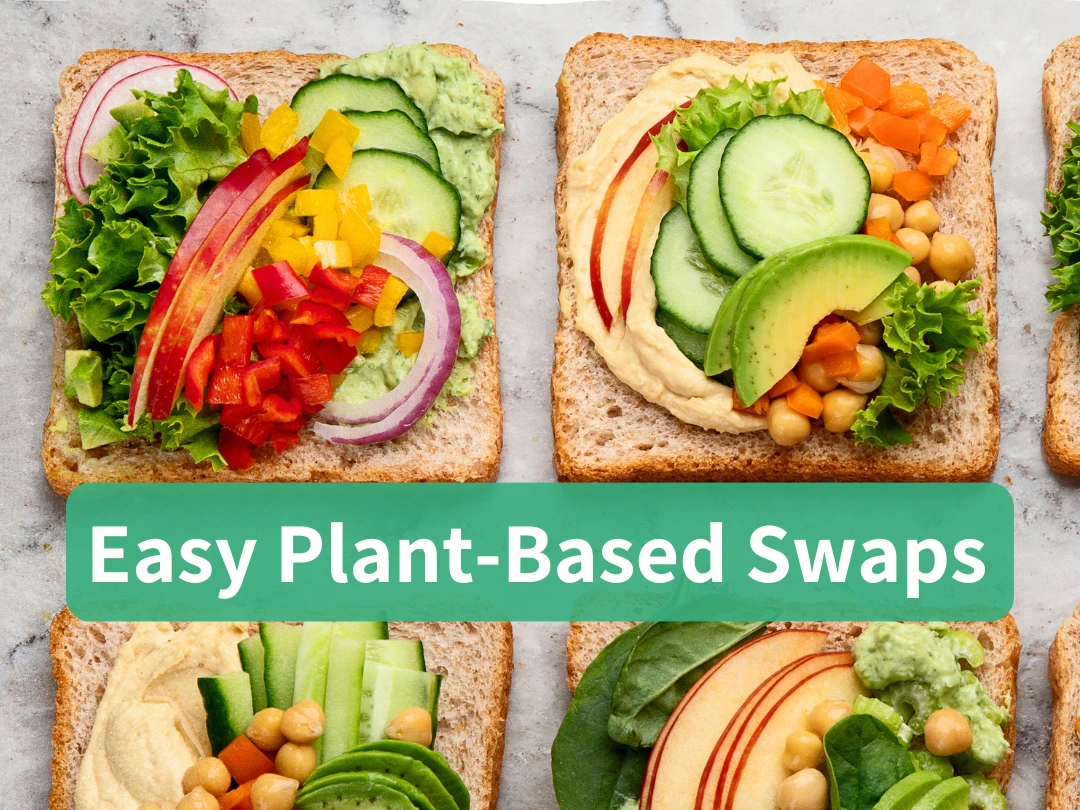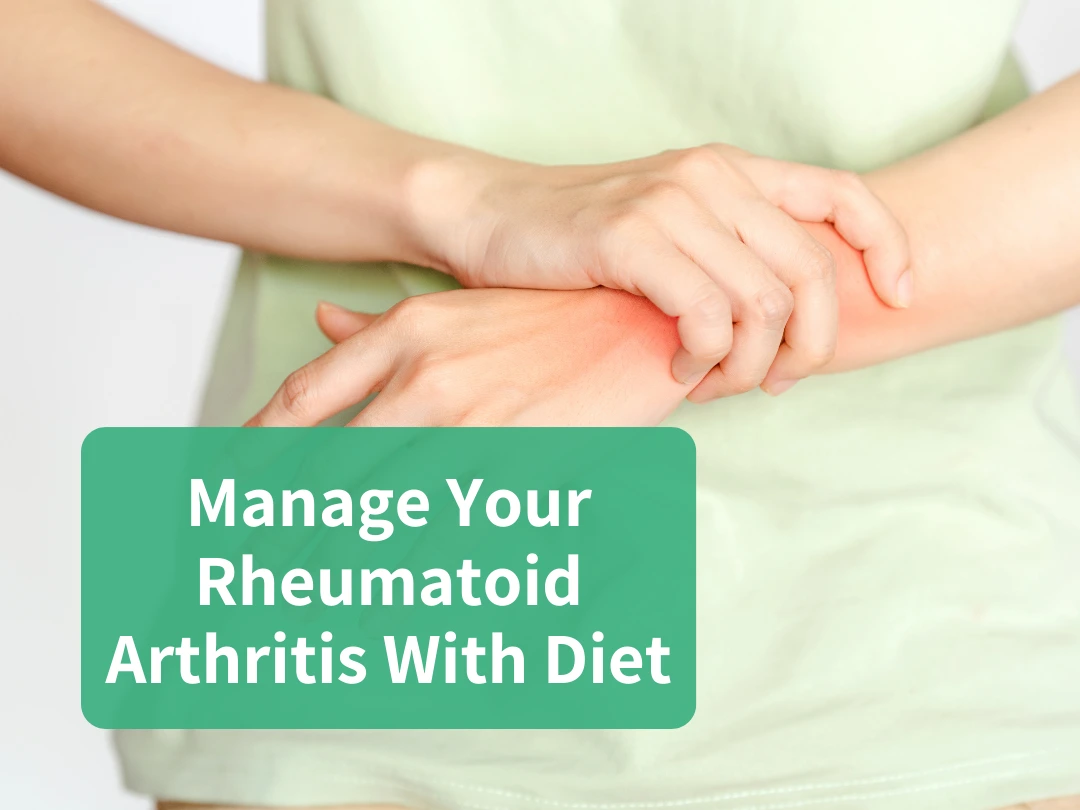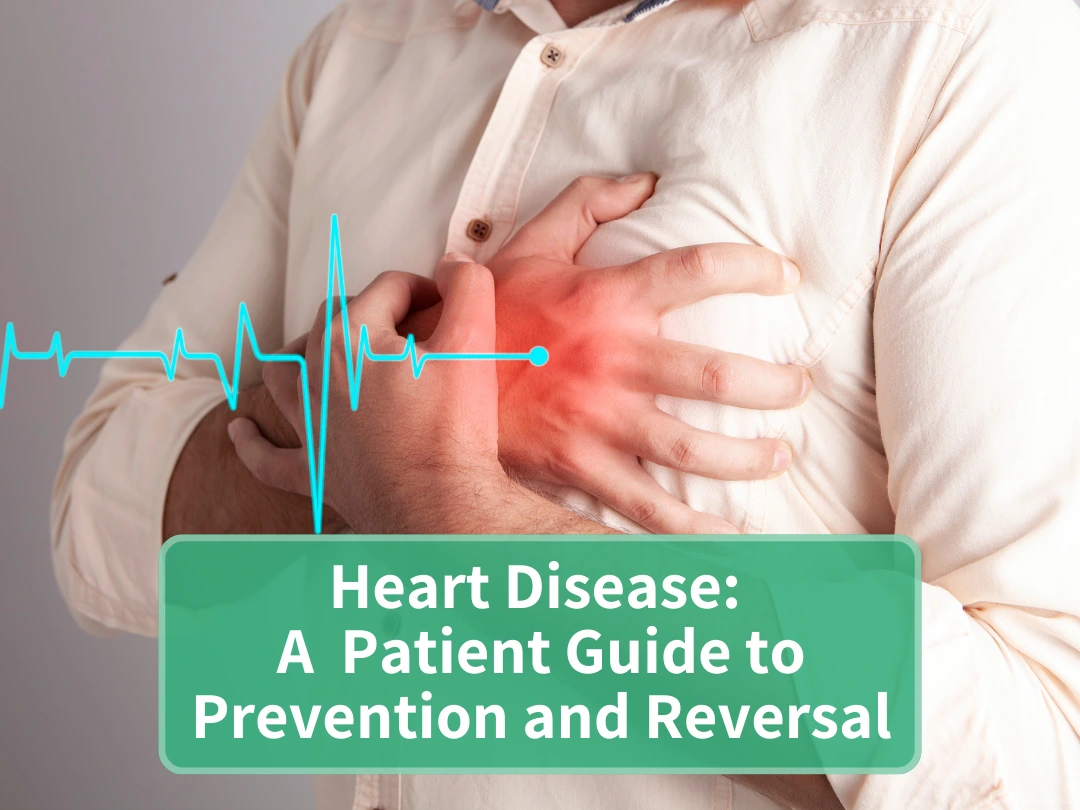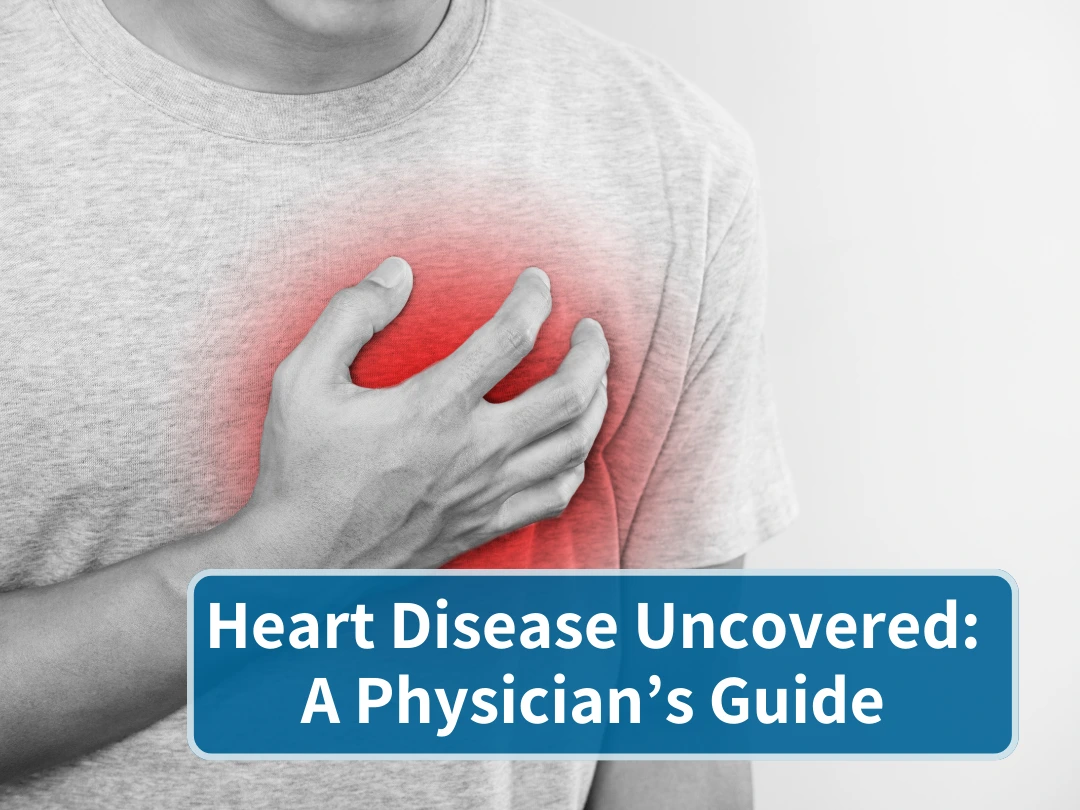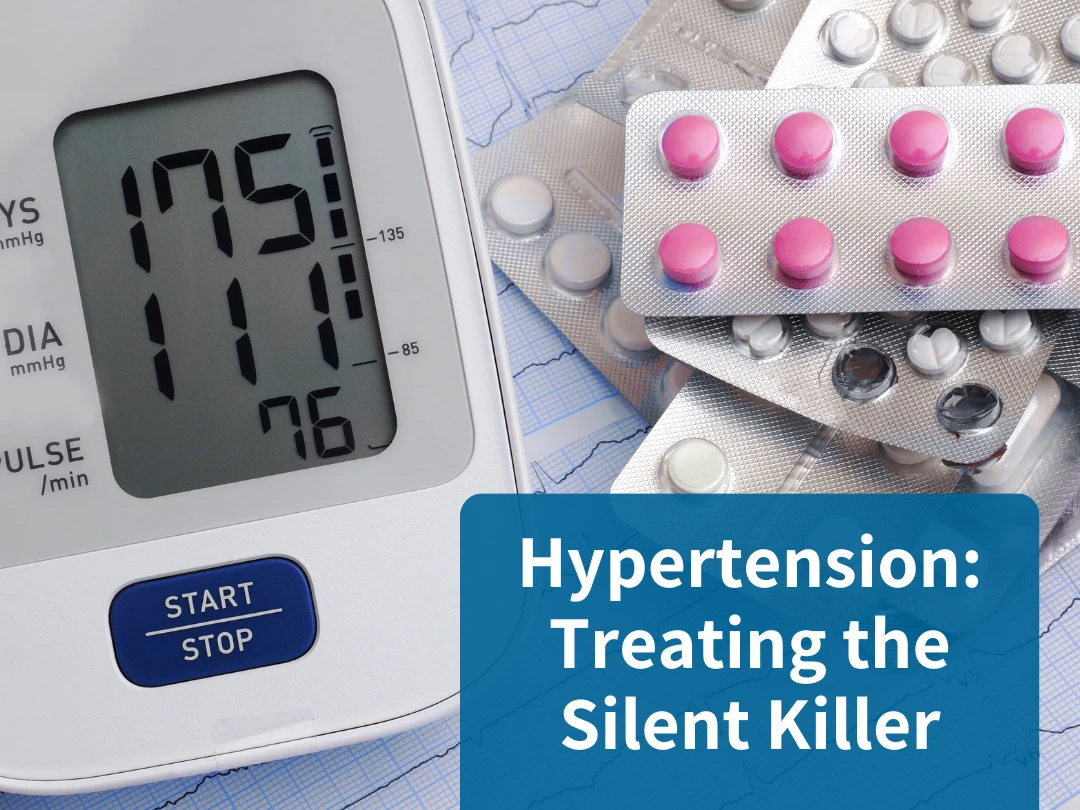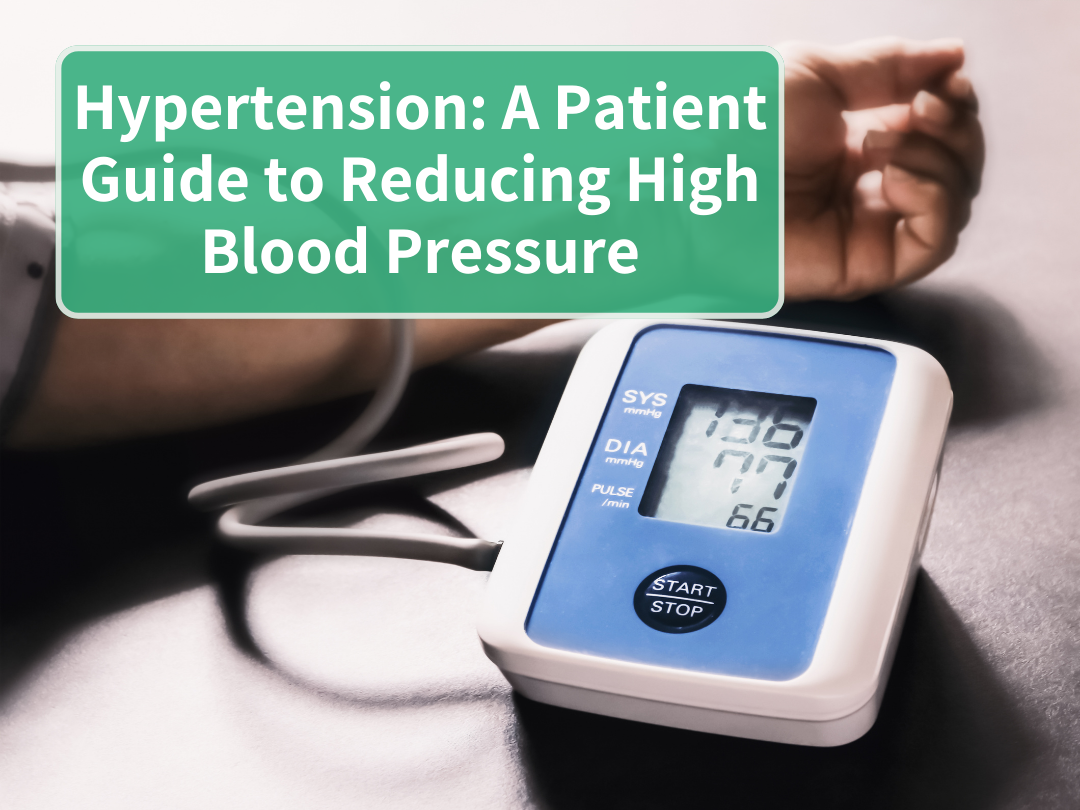
Is Soy Healthy?
Whether you do a google search, pick up a book, watch the news, or scroll through your Instagram feed, you will find polarizing facts about soy. So, what should we believe? Are soy lattes the reason the precious Amazon Rainforest is being cut down? Is soy going to cause so-called “man boobs”? Is soy a genetically modified crop? Read this article for evidence-based answers to these questions and more.
Table of contents
The truth about soy

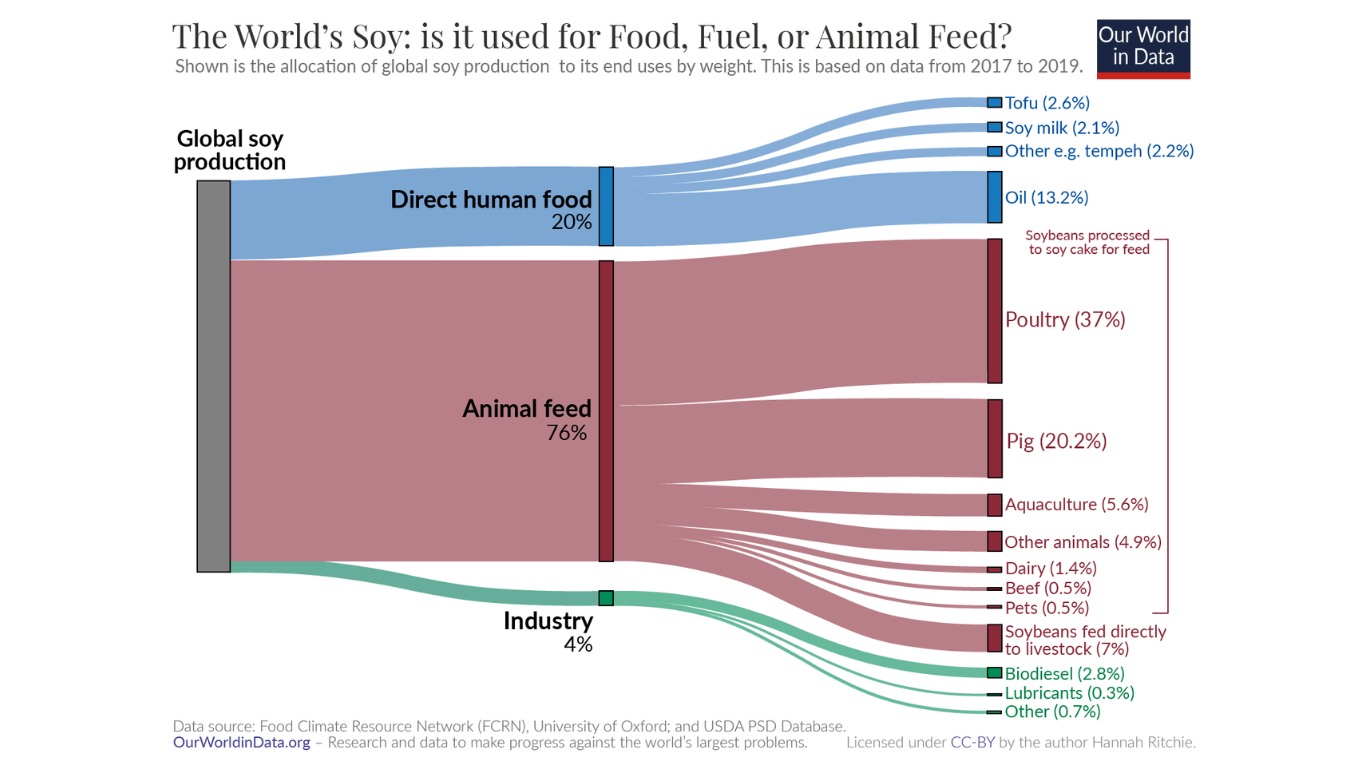
Image source: Hannah Ritchie and Max Roser (2021) – “Soy”. Published online at OurWorldInData.org. Retrieved from: ‘https://ourworldindata.org/soy‘ [Online Resource]
Those who eat animal products are most likely also consuming soy, albeit indirectly. For example, 1 kg of chicken requires more than 600 grams of soy chicken feed. Furthemore, the average Dutch person eats about 23 kg of chicken per year, which translates to an indirect yearly intake of more than 13 kg of soy chicken feed (yum!) (3). If you also add the average consumption of soy from pigs and beef, you arrive at a total of more than 30 kg of soy that ends up on the plate of the average omnivore indirectly via the feed of chickens, pigs, and cows. And let us not forget the soy that’s required to feed the cows producing milk, yoghurt, and cheese, or the chickens laying eggs.

An average omnivore consumes about 3 times as much soy as the average vegan via meat.
Soy production and its environmental impact
Although the area used to grow soy has more than quadrupled, several studies come to a similar conclusion: the direct causes of deforestation in the Brazilian Amazon rainforest are largely due to grasslands for cattle ranching, not soy production (7-9). Yet, soy still plays a significant role when we take its indirect impacts into account. Because most deforestation is driven by expanding pastures for beef, or soy to feed poultry and pigs, for consumers reducing meat consumption is a key way to make an impact (6).

Genetically modified soy
Most soy products made for human consumption, for example from brands such as Alpro, are not made from genetically modified soy (10). Any product containing genetically modified soy must state it clearly on its packaging. European legislation requires that if a product contains more than 0.9% genetically modified ingredients, it must be stated very clearly on the packaging (11). This rule does not apply to animal products derived from animals that have eaten genetically modified feed. In organic livestock farming, animals are not fed genetically modified soy. So, if you wish to eat meat, drink a glass of milk, or scramble an egg from animals that have not been fed genetically modified food, choose organic. If you don’t care, you will most likely be ingesting food produced using genetically modified soy. Whether or not genetically modified soy is bad for your health is not discussed here. The reality is: we don’t know.
Soy and breast cancer
However, recent research shows that soy consumption does not increase the risk of breast cancer, and instead may decrease it (12). In the figure below you can see why this may be the case, explained using genistein, a phytoestrogen found in soy. Because estrogen and phytoestrogens look alike, phytoestrogens can attach to the body’s estrogen receptors. But, instead of activating these receptors (and thus stimulating tissue growth), in some cases, they occupy them and block the real estrogen from being able to bind (thus reducing the stimulation of tissue growth) (13).

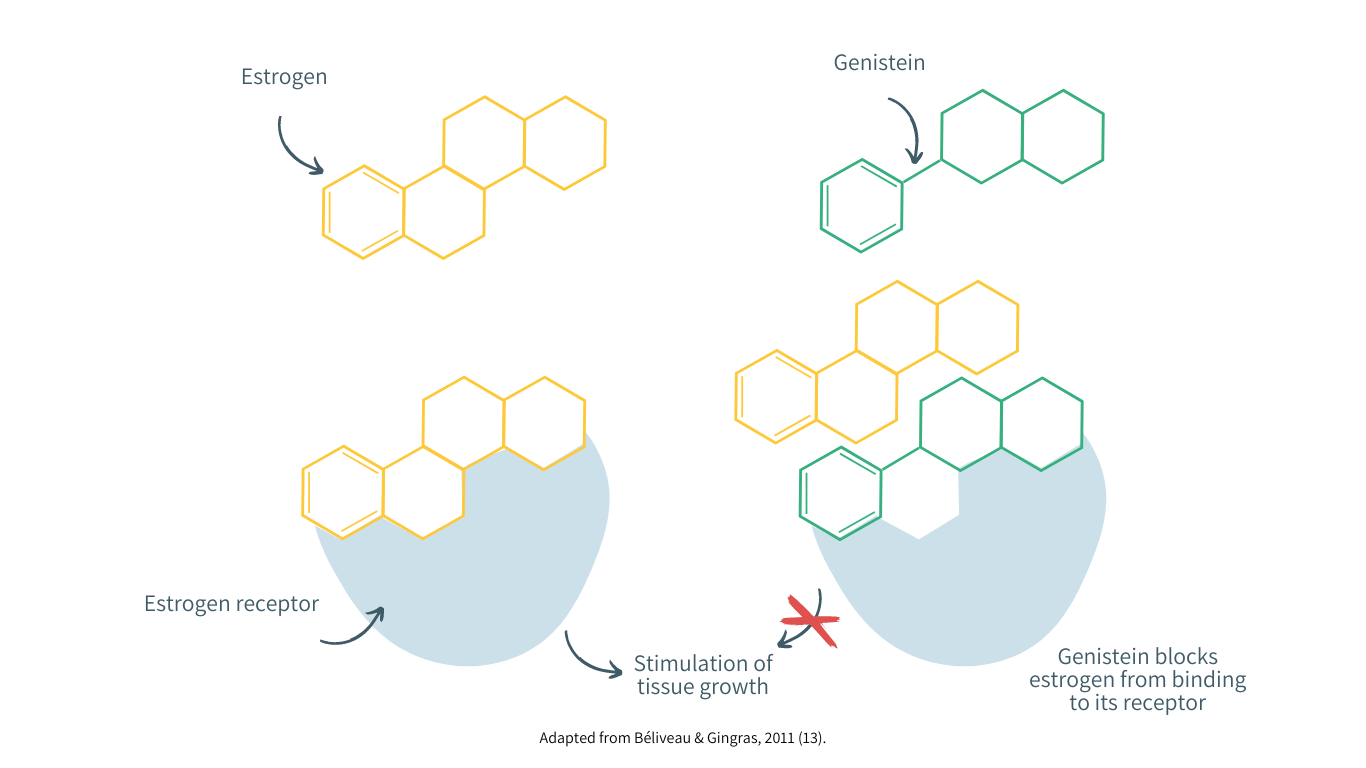
It is also interesting to look at the difference in breast cancer cases between Europe and Asia. Countries with the highest number of breast cancer cases, yet relatively low soy consumption, include Belgium, Denmark, France, and the Netherlands (18). In these countries, 315-335 out of 100,000 people (age-standardized) develop breast cancer yearly. Contrarily, in countries like Japan, China, Thailand, and Indonesia, known for relatively high soy consumption, breast cancer cases remain between 140 and 280 per 100,000 people (19). Although this may also be due to other factors, various review studies conclude that soy appears to have a protective effect against breast cancer, especially in women who have had breast cancer before (20, 21). On the other hand, dairy from cows has been linked to a higher risk of death from breast cancer and a higher risk of prostate cancer in men (22, 23). Also, red meat has also been associated with an increased risk of cancer in general and in particular breast cancer (24).
Should we be worried about phytic acids?

Studies show that consuming too many phytic acids in a deficient diet (think of developing countries or one-sided diets) can indeed aggravate the situation. Yet, this does not appear to be the case in those eating a well-balanced diet. Given the diseases that we frequently see in Western countries, it is much more interesting to look at the benefits of phytic acids. For example, phytic acids appear to be an antioxidant and have protective effects against cancer and atherosclerosis (26). Also, fermented soy products such as tempeh, miso, and soy yoghurt contain fewer phytic acids than non-fermented products, such as tofu, because they are broken down during the fermentation process.
Soy and thyroid health
Research and experience show that soy can have some impact on the thyroid gland (27, 28). Although research shows that soy does not cause a slow thyroid gland (hypothyroidism), soy can impair the absorption of iodine, and iodine is needed to make thyroid hormones. It is therefore important to ensure that the intake of iodine is also sufficient. Iodine can be found in iodized salt and bread, or seaweed. In general, if you use thyroid medicine, it is good to consult a doctor or dietician, because soy (supplements) and fibre-rich foods can reduce the absorption of these medicines (29).
Other health benefits of soy
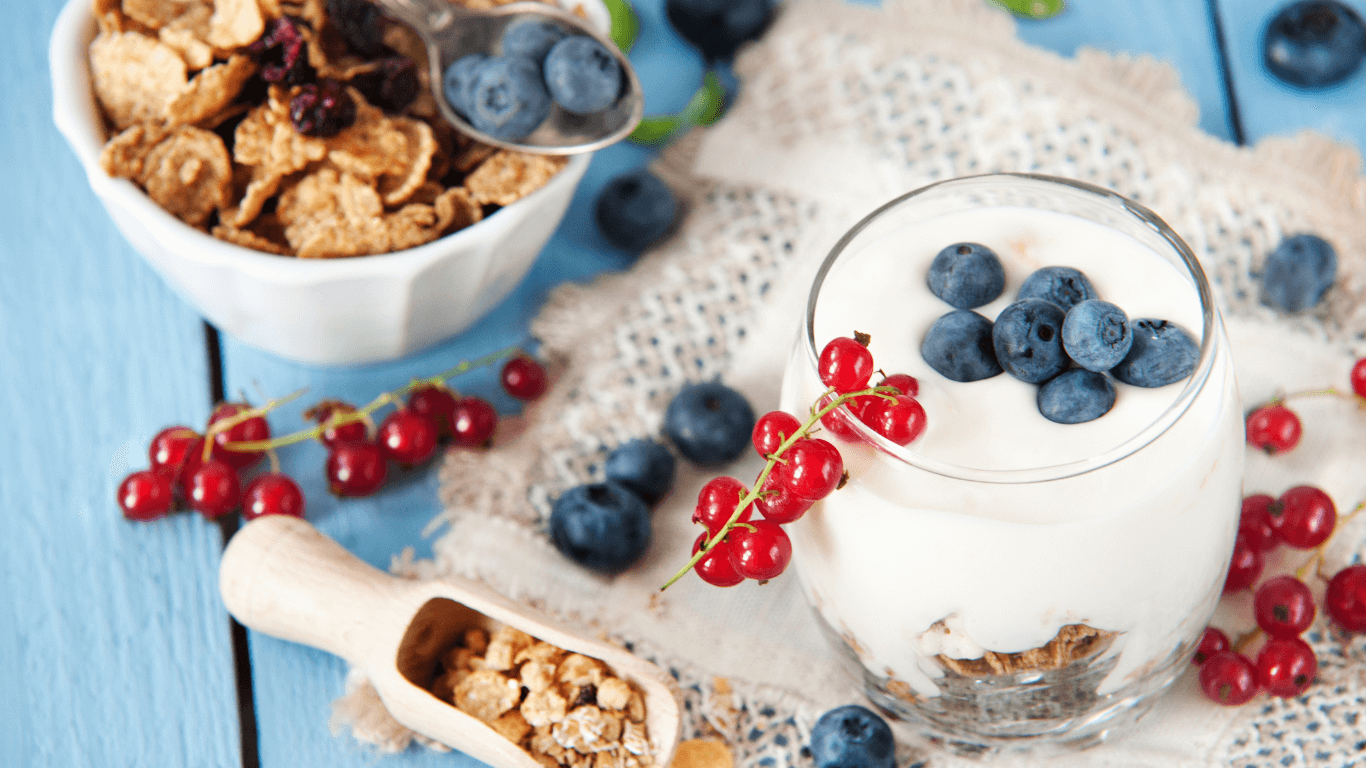
So, is soy healthy?
Soy can be a healthy choice as part of a balanced diet. Not only does it appear to be protective against certain types of cancer, as well as breast cancer, but it can also help to reduce cholesterol, inflammation, and hot flashes, and improve blood sugar levels, depressive symptoms, and skin health. Soy products are also a great replacement for dairy foods as they are higher in protein than other plant-based milk and yoghurts (250 ml soy milk = 8.25 g protein v.s. 250 dairy milk = 9 g protein). Additionally, when choosing soy products, especially as a replacement for dairy products, look for plant milk or yoghurt fortified with calcium.
Authors
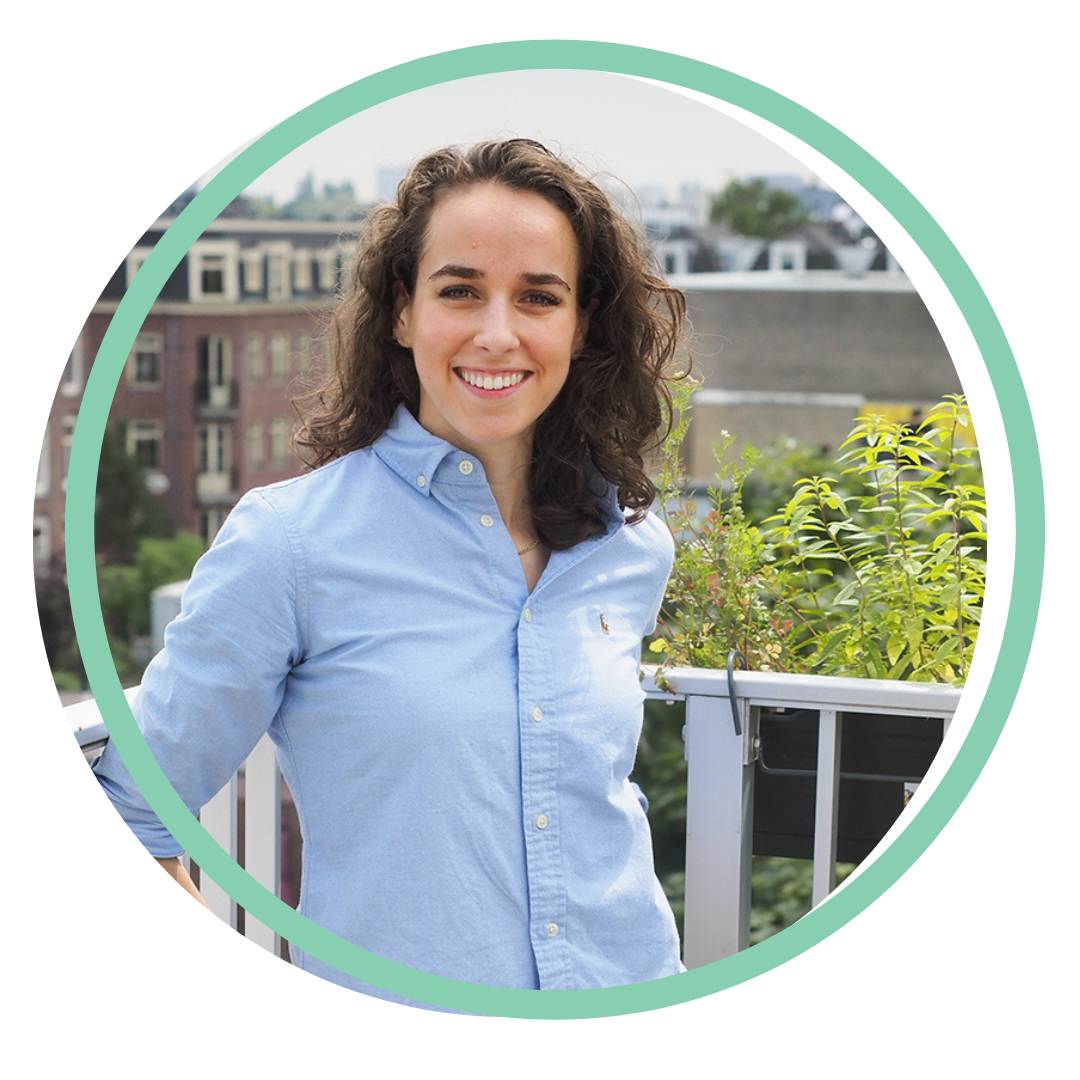
Carlijn Wagenaar, MD
Carlijn Wagenaar, MD is the Chairperson for the branch of PAN in The Netherlands. She’s an MD and PhD researcher at Reade Rheumatology and Amsterdam University Medical Center. She investigates the influence of a plant-based lifestyle program on patients with rheumatoid arthritis and osteoarthritis, especially the microbiome and implementation in healthcare.

Wendy Walrabenstein, RD
Wendy Walrabenstein, RD is the Treasurer for the branch of PAN in The Netherlands. She’s a dietician and PhD researcher at Reade Rheumatology in Amsterdam and Amsterdam University Medical Center. She investigates the effect of a plant-based lifestyle program on people with rheumatoid arthritis and osteoarthritis. Author of the book “Food Body Mind” which addresses the effects of lifestyle on inflammation and ageing, lecturer in Nutrition & Dietetics at the Amsterdam University of Applied Sciences, but also an economist with 15 years of experience in the international financial world.
References List:
- Ritchie H, Roser M. Forests and Deforestation. 2021. Available at: https://ourworldindata.org/forests-and-deforestation
- Alexander, P., Brown, C., Arneth, A., Finnigan, J., & Rounsevell, M. D. (2016). Human appropriation of land for food: the role of diet. Global Environmental Change, 41, 88-98. Available at: http://www.sciencedirect.com/science/article/pii/S0959378016302370?via%3Dihub#bib0330
- Dagevos H, Verhoog D, van Horne P, Hoste Robert. Vleesconsumptie per hoofd van de bevolking in Nederland 2005-2019 (Translation: Meat consuption per person in the Dutch population 2005-2019). September 2020. Available at: https://edepot.wur.nl/531409.
- The Dutch Soy Coalition. Soy Barometer 2014. Available at: https://www.profundo.nl/download/sojacoalitie1410a
- Messina M, Messina V. The role of soy in vegetarian diets. Nutrients. 2010;2(8):855-888.
- Hannah Ritchie and Max Roser (2021) – “Forests and Deforestation”. Published online at OurWorldInData.org. Retrieved from: ‘https://ourworldindata.org/forests-and-deforestation’ [Online Resource]
- Brandão, ASP, de Rezende, GC, Costa Marques, RW, & de Aplicada, IPE (2005). Agricultural growth in the period 1999-2004, explosion of the area planted with soybeans and the environment in Brazil.
- Müller, C. (2003). Expansion and modernization of agriculture in the Cerrado–the case of soybeans in Brazil’s center-West. Brasília: Departamento de Economia, Universidade de Brasília.
- Barona, E., Ramankutty, N., Hyman, G., & Coomes, O. T. (2010). The role of pasture and soybean in deforestation of the Brazilian Amazon. Environmental Research Letters, 5(2), 024002.
- Alpro. Frequently asked questions. Available at: https://www.alpro.com/sg/faq/
- European Parliament, Council of the European Union. Regulation (EC) No 1829/2003 of the European Parliament and of the Council of 22 September 2003 on genetically modified food and feed. 2003, September 22. Available at: https://eur-lex.europa.eu/legal-content/EN/ALL/?uri=CELEX%3A32003R1829
- American Institute for Cancer Research. Soy: Intake Does Not Increase Risk for Breast Cancer Survivors. Available at: http://www.aicr.org/foods-that-fight-cancer/soy.html#research
- Béliveau R, Gingras D. Eten tegen kanker: de rol van voeding bij het ontstaan van kanker (Translation: Eating against cancer: the role of food in the development of cancer). 6th edition. Utrecht/Antwerpen: Kosmos Publishers; 2011.
- Moorehead RA. Rodent Models Assessing Mammary Tumor Prevention by Soy or Soy Isoflavones. Genes. 2019; 10(8):566. https://doi.org/10.3390/genes10080566
- Soukup, S.T., Helppi, J., Müller, D.R. et al. Phase II metabolism of the soy isoflavones genistein and daidzein in humans, rats and mice: a cross-species and sex comparison.Arch Toxicol 90, 1335–1347 (2016). https://doi.org/10.1007/s00204-016-1663-5
- Setchell KD, Brown NM, Zhao X, Lindley SL, Heubi JE, King EC, Messina MJ. Soy isoflavone phase II metabolism differs between rodents and humans: implications for the effect on breast cancer risk. Am J Clin Nutr. 2011 Nov;94(5):1284-94. doi: 10.3945/ajcn.111.019638. Epub 2011 Sep 28. PMID: 21955647; PMCID: PMC3192476.
- Fan Y, Wang M, Li Z, Jiang H, Shi J, Shi X, Liu S, Zhao J, Kong L, Zhang W and Ma L (2022) Intake of Soy, Soy Isoflavones and Soy Protein and Risk of Cancer Incidence and Mortality. Front. Nutr. 9:847421. doi: 10.3389/fnut.2022.847421
- World Cancer Research fund International. Global cancer data by country. 2022, March 23. Available at: https://www.wcrf.org/cancer-trends/global-cancer-data-by-country/
- Pulitzer Center. Cancer’s Global Footprint. Breast Cancer Incidence. 2008. Available at: http://globalcancermap.com/
- Chen M, Rao Y, Zheng Y, et al. Association between soy isoflavone intake and breast cancer risk for pre- and post-menopausal women: a meta-analysis of epidemiological studies. PLoS One. 2014;9(2):e89288.
- Nechuta SJ, Caan BJ, Chen WY, et al. Soy food intake after diagnosis of breast cancer and survival: an in-depth analysis of combined evidence from cohort studies of US and Chinese women. Am J Clin Nutr. 2012;96(1):123-132.
- Kroenke CH, Kwan ML, Sweeney C, et al. High- and Low-Fat Dairy Intake, Recurrence, and Mortality After Breast Cancer Diagnosis. JNCI Journal of the National Cancer Institute. 2013;105(9):616-623.
- Lu W, Chen H, Niu Y, et al. Dairy products intake and cancer mortality risk: a meta-analysis of 11 population-based cohort studies. Nutrition Journal. 2016;doi: 10.1186/s12937-016-0210-9.
- Diallo A, Deschasaux M, Latino-Martel P, Hercberg S, Galan P, Fassier P, Allès B, Guéraud F, Pierre FH, Touvier M. Red and processed meat intake and cancer risk: Results from the prospective NutriNet-Santé cohort study. Int J Cancer. 2018 Jan 15;142(2):230-237. doi: 10.1002/ijc.31046. Epub 2017 Oct 16. PMID: 28913916.
- Melina V, Craig W, Levin S. Position of the Academy of Nutrition and Dietetics: Vegetarian Diets. Journal of the Academy of Nutrition and Dietetics. 2016;116:1970-1980.
- Schlemmer U, Frølich W, Prieto RM, et al. Phytate in foods and significance for humans: Food sources, intake, processing, bioavailability, protective role and analysis. Molecular Nutrition & Food Research. 2009;53:S330-S375.
- Messina M, Redmond G. Effects of soy protein and soybean isoflavones on thyroid function in healthy adults and hypothyroid patients: a review of the relevant literature. Thyroid. 2006;16:249-258.
- Divi RL, Chang HC, Doerge DR. Anti-thyroid isoflavones from soybean: isolation, characterization, and mechanisms of action. Biochem Pharmacol. 1997;54:1087-1096.
- Zorginstituut Nederland. Farmacotherapeutisch Kompas. Levothyroxine. Available at: https://www.farmacotherapeutischkompas.nl/bladeren-volgens-boek/preparaatteksten/l/levothyroxine
- Wu SH, Shu XO, Chow WH, et al. Soy food intake and circulating levels of inflammatory markers in Chinese Women. J Acad Nutr Diet. 2012;112:996-1004.
- Messina M. Soy and Health Update: Evaluation of the Clinical and Epidemiologic Literature. Nutrients. 2016 Nov 24;8(12):754. doi: 10.3390/nu8120754. PMID: 27886135; PMCID: PMC5188409.
- Li N, Wu X, Zhuang W, Xia L, Chen Y, Zhao R, Yi M, Wan Q, Du L, Zhou Y. Soy and Isoflavone Consumption and Multiple Health Outcomes: Umbrella Review of Systematic Reviews and Meta-Analyses of Observational Studies and Randomized Trials in Humans. Mol Nutr Food Res. 2020 Feb;64(4):e1900751. doi: 10.1002/mnfr.201900751. Epub 2019 Oct 14. PMID: 31584249.
Recent posts
Alzheimer’s Disease: Decode the Complex Puzzle
Alzheimer’s is a complex puzzle. Learn about genetic factors and how recommending a whole food, plant-based diet can elevate patient care.
A Patient Guide to Outsmarting Alzheimer’s Disease
Learn how dietary choices impact Alzheimer’s risk. Discover measures that can slow progression and reduce its effects.
Easy Plant-Based Swaps
Make your transition to a whole food, plant-based diet stick. Explore delicious and easy plant-based swaps to add more plants to your plate.
Manage Your Rheumatoid Arthritis With Diet
Manage rheumatoid arthritis naturally with a plant-based diet. Reduce inflammation, ease joint pain, and improve your overall health.
Rheumatoid Arthritis and Diet: A Physician’s Guide
Rheumatoid Arthritis and Diet: A Physician’s GuideBy Carlijn Wagenaar, MD and Wendy Walrabenstein, RD from PAN The...
Heart Disease: A Patient Guide to Prevention and Reversal
Discover how to prevent and reverse heart disease. Learn about the advantages of lifestyle changes with a whole food plant-based diet.
Heart Disease Uncovered: A Physician’s Guide
Uncover the secrets to prevent and reverse heart disease. Learn how a whole food plant-based diet can help patients lead a heart-healthy life.
Treating the Silent Killer: Hypertension Insights and Solutions
Explore the power of plant-based diets in managing hypertension. Empower your patients to take control of their blood pressure readings.
Hypertension: A Patient Guide to Reducing High Blood Pressure
Is high blood pressure dangerous? What can you do to manage hypertension and reduce your risk of other related diseases?
Carbohydrates: A Complex or Simple Matter?
Are carbohydrates essential for our health? Do low-carb diets yield greater weight loss? What benefits do whole plant-based foods provide? Find out the answers to these questions and more in this blog post.

Making better physicians
Ready to improve your nutrition knowledge?
Sign up to the PAN Academy and take our free online courses on nutrition science.
Module #2 Basics of Nutrition
Are you interested in digging deeper into the evolution of nutrition science? Wanna upskill your understanding of micro and macronutrients and their roles in the human body? Then, this module is for you!



Making better physicians
Ready to improve your nutrition knowledge?
Sign up to the PAN Academy and take our free online courses on nutrition science.
Module #2 Basics of Nutrition
Are you interested in digging deeper into the evolution of nutrition science? Wanna upskill your understanding of micro and macronutrients and their roles in the human body? Then, this module is for you!

